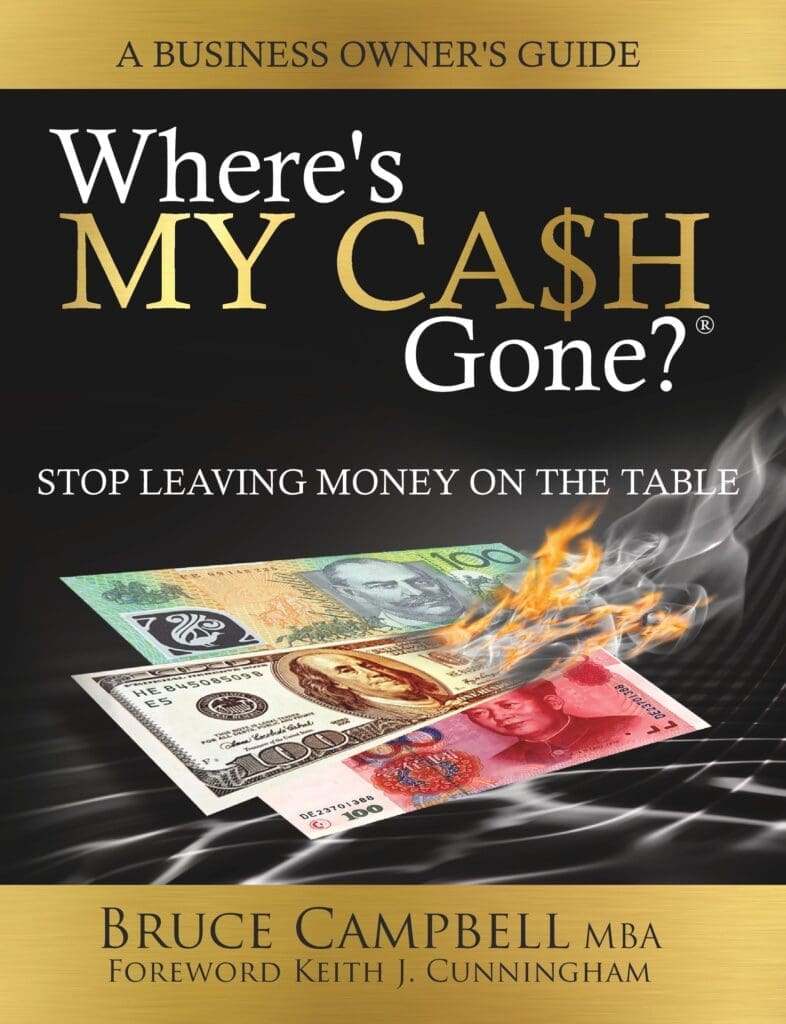
Turn Incremental into Massive Growth Profit
October 12, 2023
Does this headline sound unrealistic? Today I’m going to further illustrate a little known principle called “Divide to Multiply”. The Divide to Multiply principle encourages us to segment a concept into its finest increments to produce deeper understanding. Then, by focusing on incrementally improving each segment, we benefit from the synergistic effect of those small improvements multiplying into massive improvement of the original concept.
An example is a manufacturing process. By dividing the manufacturing process into fine segments and then focusing on improving the quality and efficiency of each segment, the multiplicative effect is a large improvement in productivity, quality, and cost reduction for the company.
Do you want to massively improve your profits? Pause in your reading, right now, and think about what a 50% improvement in your bottom line would mean for your business and lifestyle. Sound too good to be true? Hang on- keep reading.
Is your mindset: Profit = Sales Revenue- Expenses? Then you are correct. In that case, we must increase sales and/or decrease expenses to increase our bottom line. How do we increase sales? “Just do it” as Nike says. “Easier said than done” you say.
Introducing the 5 Ways Business Chassis! Every business, no matter what type, (including you professionals and nonprofits) runs on this chassis. The 5 Ways is a great example of the Divide to Multiply principle. Here it is: # of Leads X Conversion Rate = # of Customers X Average $ Sale X Avg. # of Transactions = Revenue Xprofit margin = Profit.
The items in bold are the 5 ways to increase profits. Those behind equal signs are the results; not the ways to obtain the results.
What would happen to our bottom line if we focused on making small increases in each of the 5 ways? Let’s take a look at each of the 5 Ways.
# of Leads:
The number of potential buyers with whom you’ve communicated (also known as prospects). Can you apply the Divide to Multiply principle to # of Leads to gain deeper understanding? Yes! Remember my recent article describing the “Customer Ladder of Loyalty”? Your prospects originate from your suspects. Additionally your business might have numerous target markets, each with a different set of suspects and prospects. Do you see how you can create an additional formula just for leads and apply the same principles in play with the 5 Ways Business Chassis?
One last point; don’t confuse responses, or the number of potential buyers, with results. The sound of ringing phones does not mean that the cash registers are ringing as well- which allows me to segue into Conversion Rate.
Conversion Rate:
The percentage of Prospects that become Shoppers (the next rung on the Customer Ladder of Loyalty). For example, if you communicated with 10 prospects today and 3 made a purchase from you, your conversion rate is 30%. Do you see how the question of how to get more customers becomes clearer? By increasing our number of leads and our conversion rate!
# of Transactions:
The average number of times an individual or company purchases from you in a year. Some of your Prospects will only become a Shopper. Others will become a Customer, and others will become a Member, Advocate, or Raving Fan. Some will only purchase from you once, some will purchase twice a year or maybe as high as daily, depending upon the type of business and how well you service them.
It helps to keep a database of past customers. Don’t make the mistake of subscribing to the myth of “once a customer, always a customer”. The average number of transactions is closely related to the average sale of each purchase, which is also over the course of a year.
Average $ Sale:
Your total sales volume divided by the number of sales. This Way is one of the least expensive and the easiest to improve. The result of multiplying these 4 Ways is your total sales revenue.
Profit Margin: The average amount of money from each sale that is leftover after subtracting expenses as a percentage of the sales for the year. For example; you sell something for $100. After subtracting expenses you have $25 left. Your profit margin is 25%. Multiplying your sales revenue by your profit margin yields your profit.
See our events page for information on all of our upcoming events
BUSINESS GROWTH WORKSHOPS
Dunedin
Date May 1, 2024
Entry 5:15pm – 5:30pm
Workshop: 5:30pm – 7:00pm
Address
The Dunedin Centre, 1 Harrop Street, Central Dunedin, Dunedin 9016, New Zealand
The Dunedin Centre, 1 Harrop Street, Central Dunedin, Dunedin 9016, New Zealand
Christchurch
Date April 29, 2024
Entry 5:15pm – 5:30pm
Workshop: 5:30pm – 7:00pm
Address
HAERE-ROA (University of Canterbury), 90 Ilam Road, Ilam, Christchurch 8041, New Zealand
HAERE-ROA (University of Canterbury), 90 Ilam Road, Ilam, Christchurch 8041, New Zealand
Port Moresby
Date April 22, 2024
Entry 5:15pm – 5:30pm
Workshop: 5:30pm – 7:00pm
Address
Holiday Inn & Suites Port Moresby PNG, Cnr Waigani Drive, Wards Rd, Port Moresby 121, Papua New Guinea
Holiday Inn & Suites Port Moresby PNG, Cnr Waigani Drive, Wards Rd, Port Moresby 121, Papua New Guinea

